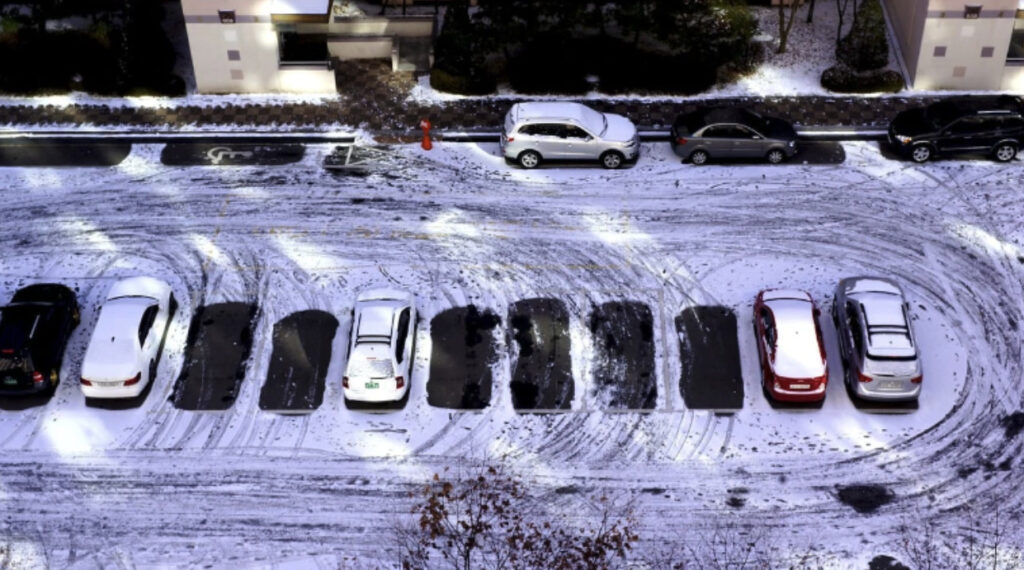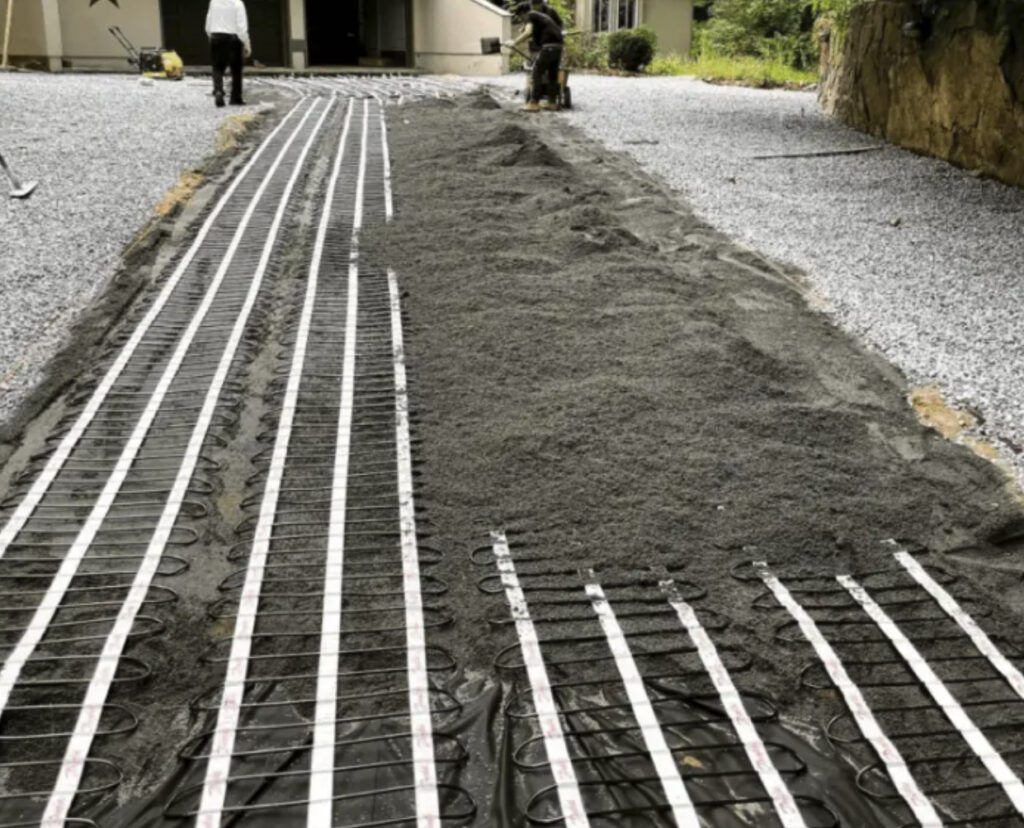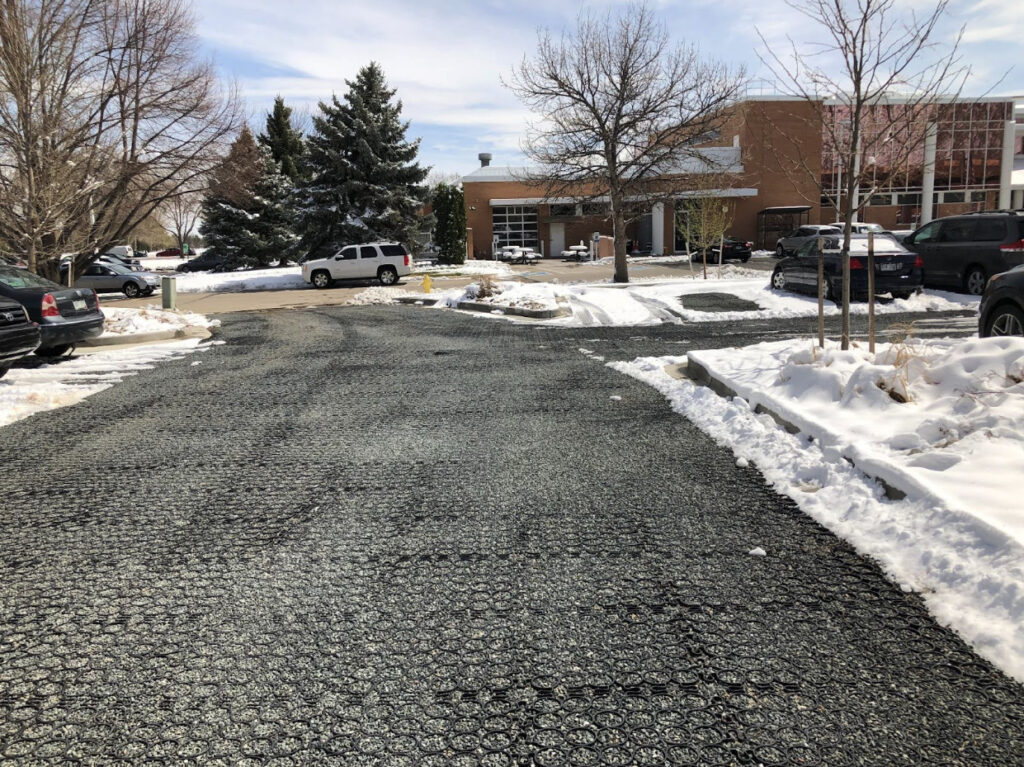
Have you ever thought about how much time you spend shoveling snow or how much money goes into snow removal services every winter? Heated parking lots are rising in popularity as a modern solution to snow and ice build-up because they offer a maintenance-free surface that stays clear no matter how much snow falls.
Are they worth the investment, and are there better alternatives? In this article, we’ll dive into the world of heated parking lots and give you everything you need to know to decide whether they’re the right choice for you. Let’s get started!
What is a Heated Parking Lot?
A heated parking lot is designed to melt snow and ice automatically, to keep surfaces clear without the hassle of manual snow removal. These systems work by installing a heating mechanism underneath the pavement, which warms the surface just enough to prevent snow from accumulating. Here’s a quick look at the common heating options for parking lots:
Electric Heating Cables
Cables are installed beneath the surface and use electricity to generate heat that radiates upward in order to melt snow and ice.
Hydronic Systems
Similar to electric heating cables, hydronic systems use pipes that are installed beneath the driveway’s surface. Heated water is then pushed through the pipes, to heat the surface and melt the snow and ice.
What Places Can Benefit from Heated Parking Lots?

Heated parking lots can be especially beneficial in areas with heavy snowfall or frequent icy conditions. Commercial properties like shopping centers, hospitals, and office buildings would benefit greatly from them, because these locations prioritize safety and accessibility for their customers and employees.
Residential properties with sloped driveways or large parking areas would also benefit from heated driveway systems because they essentially eliminate the need for constant maintenance. Essentially, any multi-resident home or place of business that suffers from extremely cold weather could benefit from a heated parking lot.
Heated Parking Lot Costs

Investing in a heated parking lot can be appealing, but it’s important to consider the costs. The price can vary significantly depending on the heating system and the size of the area you’re trying to heat. Here’s a look at the costs of heated parking lots:
- Electric Heating Cables: Typically cost between $5 to $9 per square foot, not including the added cost of labor.
- Hydronic Systems: Cost between $15-$30 per square foot, not including the added labor costs.
- Parking Lot Surface Materials: Since heated parking lots will essentially require a brand-new parking lot surface, you’ll need to consider the cost of installing a new driveway on top of the heating elements. This cost can vary depending on the surface area, the contractor, and the materials you choose.
- Labor Costs: These costs vary depending on your contractor.
- Control Panels: In order to operate a heated parking lot, you’ll need a control system, which ranges from $600 to $3,800.
The Pros and Cons of Heated Parking Lots
Installing a heated parking lot comes with significant advantages, but it’s not without its disadvantages. Here’s a closer look at the pros and cons of heated parking lots:
Pro: No More Shoveling
Imagine never having to pick up a snow shovel again. Heated parking lots make snow shovels and blowers a thing of the past because they melt it before it can build up and become a problem.
Pro: No Snow Removal Services
Heated parking lot systems eliminate the need for snow plow services, which can save substantial money over time, particularly for large commercial parking spaces.
Pro: Safety
Snow and ice create dangerous conditions for residents and customers, and a heated lot drastically reduces the risk of slips, falls, and accidents.
Pro: Protects Driveway Surface
By avoiding the freeze-thaw cycle, heated lots protect your pavement from cracking and damage, which extends the life of your parking lot surface.
Pro: Better Traction
Clear, dry surfaces mean better grip for cars and people, which makes your lot safer for everyone to walk or drive on.
Con: Limited Area of Effect
Even the best systems struggle in extreme conditions, leaving some areas less effective than others, particularly near curbs and edges. Also, if you don’t install radiant heating systems in your walkways and sidewalks, people are still in danger of falling when using your parking lot.
Con: Initial Costs
The cost of installing a radiant heating system is high, especially for large parking lots. This upfront expense can be a barrier for many property owners.
Con: Difficult Installation
Installing a heated parking lot involves significant excavation and disruption, which can be time-consuming and impractical for properties that rely on their parking lots.
Con: Energy Costs
Heating a large surface requires considerable energy, which leads to high operational costs, especially in areas with harsh winters.
Con: Difficult to Repair
If something goes wrong beneath the surface, repairs can be complicated and expensive, often requiring complete replacement of the affected area.
Try Permeable Pavers With or Without a Snow-Melt System
While heated parking lots offer some advantages, permeable pavers are a super strong alternative, particularly in snowy regions. These innovative pavers allow water to drain through, to reduce ice formation and improve traction, naturally. Unlike heated parking lots, which require constant energy and upkeep, permeable pavers work passively to keep your surface safe and dry.

Stabilize Your Parking Lot with Permeable Pavers from TRUEGRID®
If you’re considering a more sustainable, cost-effective approach to snow management, permeable pavers from TRUEGRID® are the solution for you. The innovative design of our permeable paver system improves traction, minimizes ice build-up, and protects your parking lot from the elements – all without the high costs of radiant heating systems.
Ready to upgrade your parking lot?
Contact us today to learn more about how our permeable pavers can transform your parking lot!



